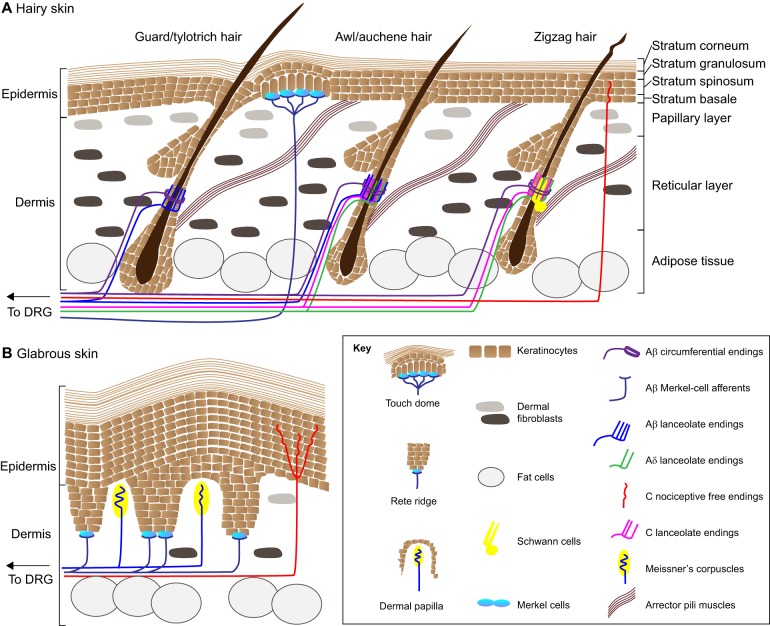Fig. 1.
Mechanosensory end organs in skin. The touch receptors of hairy and glabrous skin are highly diverse. (A) Hairy skin is decorated with distinct types of hair follicles. Guard/tylotrich hairs are the most rare hair type, and also the longest. Awl/auchene hairs and zigzag hairs make up the bulk of the hairs in the mouse coat. Each hair type is associated with a unique complement of sensory neurons. Lanceolate and circumferential endings wrap around the bulge region of hair follicles, which stretches between the sebaceous gland and the connection site of arrector pili muscles. Note that all lanceolate endings intercalate with the protrusions of terminal Schwann cells, one of which is shown in the schematic (yellow). Other neurons innervate touch domes, which are discrete, raised zones of the skin adjacent to guard hairs. These neurons innervate epidermal Merkel cells (teal). (B) Instead of hairs, hallmarks of glabrous skin include invaginations of the epidermis called rete ridges. Dermal zones between rete ridges are called dermal papillae. Merkel cells and their associated afferents are found at the base of rete ridges, whereas Meissner's corpuscles protrude into dermal papillae.

